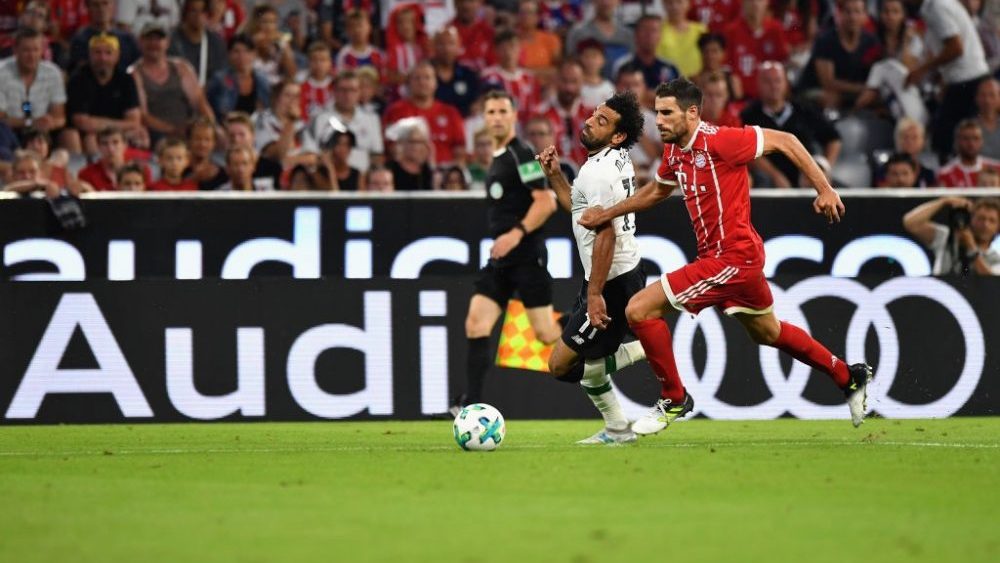Preview: Liverpool FC – FC Bayern
In the last 5 years the joke has been made that the season for FC Bayern would only really start now. This time it is different. Before the Champions League round of the last sixteen against Liverpool FC, Bayern find themselves in a situation in which the season could be over faster than they would like.
Although both clubs have a huge tradition in European top football, they only met seven times in competitive matches. Bayern could only win one of these games, Liverpool at least two – all other games were drawn. Klopp’s record against the record champion from Germany is also sobering from FCB’s point of view: 9 wins, 4 draws, 16 defeats. Six of these defeats and one of the draws with 1. FSV Mainz 05. Only a few active coaches in Europe have such a good record against FC Bayern.
In the Champions League Klopp now wants to further improve on it. We talked to Sven Ziegler and Richard Köppe of “Supporters Verband” LFC Familie about the upcoming first leg at Anfield Road and how optimistic the Liverpool fans are. On page 2 there is also an analysis of FC Bayern’s current problems and on page 3 we analyse the English with all their strengths and some weaknesses, which the five-time Champions League winner from Munich could perhaps exploit.
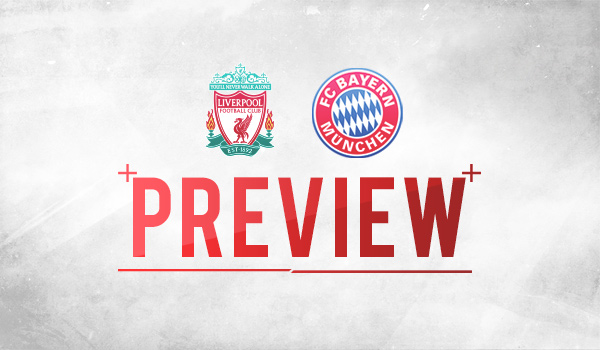
“No name is too big for us”
Miasanrot.de: Servus, please introduce us to your project! How did you as German speaking fans become fans of Liverpool FC?
Sven Ziegler: Servus or in our case more like “Hi there!” We are the LFC family, a german blog with all news and information about Liverpool FC. But we are not only a blog, but primarily a big association with fans from the whole German-speaking area. In several cities in Germany and Switzerland we watch Liverpool FC matches together in pubs or travel together to Anfield to celebrate or suffer with the team.
Personally, I came to Liverpool FC more by chance. After a game against Manchester City in 2012, which I had the chance to watch in front of the TV, the fever seized me. Since then I have been a Red through and through. But there are also many of us in the association and in the now nine member media team who have inherited the red gene from family or friends.
Miasanrot.de: In the last years many fans weren’t really happy when they were drawn against FC Bayern. Has that changed? What were the reactions like in the fanbase of FC Liverpool?
Richard Köppe: Well, you can never speak of a lucky draw when you get FC Bayern, but the reactions were mostly optimistic. We know since last season that we can beat every opponent over two games and that we don’t have to be afraid of anyone. No name is too big for us.
Miasanrot.de: Besides Klopp knows how to beat FC Bayern. But in the past he couldn’t do underdogs. What has improved in this season that exactly this works out most of the time and Liverpool is therefore top of the table?
Richard: Klopp has repaired the defensive construction sites of the past years by hiring Virgil van Dijk and Alisson. The goalkeeper position is finally safe and the Dutchman is a real leader in defence. We have therefore conceded fewer unnecessary goals against the smaller clubs. At the same time, we have maintained our offensive strengths. Firmino, Salah and Mane are all extremely dangerous and from midfield Shaqiri and Wijnaldum are also good for one or two shots. That makes us unpredictable in the attacking game and most opponents do not manage to prevent this concentrated offensive from scoring.
Miasanrot.de: Is dancing on many weddings still a problem for the squad?
Sven: Due to the high load in the Premier League and the two cup competitions every English top club has to set certain priorities. In the past seasons it showed again and again, how Liverpool started strong, but at the end of the season it simply couldn’t keep up with the top. The lack of squad depth was also a big problem.
For the first time this season, you have the feeling that the team can hold out until the end. In spite of important new recruitments, Klopp also knows that you can’t compete everywhere, and that’s how he is setting up his team. The fact that Liverpool did not get very far in both the League Cup and the FA Cup was hardly a big surprise for any fan, the priorities are elsewhere.
Miasanrot.de: Which competition is prioritized and why?
Richard: I think both the Premier League and the Champions League are of equal importance for Klopp and the team. Although the Liverpool fans have a special relationship to the European Cup, almost everyone would put the championship title before the Champions League success. We have been waiting for a league title for 29 years, it is the holy grail for every Red. A whole generation of fans hasn’t experienced this yet. There will be a party of epic proportions if we are crowned Premier League winner 18/19 in May. No other title in the club’s long history would be celebrated as much as the next championship.
Miasanrot.de: What weaknesses does Liverpool still have despite all its successes?
Sven: Until the turn of the year one could think that the Reds would not show any weaknesses at all. But then the situation changed drastically, suddenly the team got into a negative spiral. The big weakness in my opinion is the depth of the squad. If Mohamed Salah and Roberto Firmino are in a slump, they are very difficult to replace, so there is no danger of scoring. The situation on the right defender position is also difficult, after the loss of Trent Alexander-Arnold and Joe Gomez we suddenly had no right defender. After all, Alexander-Arnold seems to be fit for Tuesday again, which is certainly an incredibly important factor.
Last but not least, it is also important that the central defence gets a good day. Van Dijk will start in the second leg, but both Joel Matip and Dejan Lovren showed weak moments in the big games. Here it takes 90 minutes of full concentration.
Miasanrot.de: What strengths and weaknesses do you see at FCB?
Richard: FC Bayern’s strengths are clearly in its midfield squad depth. With Goretzka, Thiago, Javi Martínez and Tolisso it is full of quality. The same goes for the wings. Ribéry and Robben may be in the late autumn of their careers, but they can win games. Lewandowski has eight goals from the group stage, making him a crucial player for Bayern and Liverpool will have to look after him.
If he doesn’t perform or gets injured, however, Bayern will lose a lot of their chances of scoring, especially as Müller is also suspended. The defence is the Achilles heel of the team. Bayern have conceded too many reckless goals this season, especially against the smaller Bundesliga teams. Our attack proved that he is one of the best in Europe.
I suspect that players like Boateng and Hummels will not be able to cope with the pace and if Alaba and Kimmich go too far forward, there could be dangerous gaps. Manuel Neuer is no longer the mainstay that he was before his injury this season. Nevertheless, he is still a great keeper.
Miasanrot.de: What kind of match do you expect in the first leg and how will it end?
Richard: I expect both teams to have an offensive firework on Anfield Road. Bayern will play for the away goal and want to put a lot of pressure on the defence without van Dijk. But if FCB want to dominate the game, they’ re going to play into Liverpool’s hands with our pressing and our counter strength. We will certainly not see a 0:0. Even without van Dijk, I don’t think FC Bayern will beat us in Anfield. No German team has managed that yet. I’m predicting a 3:1 win for Liverpool. In the second leg in the Allianz Arena, there will be a draw and Liverpool will advance.
On the next page we analyze FC Bayern’s problems.
Will it be the great awakening or an unexpected ecstasy for FC Bayern? Big games often have their own character, their own history. But is that enough? Can the Munich team solve their problems against Liverpool?
Above all, the defence has become the focus of criticism. 2, 1, 2, 3, 1, 1, 1 – from Augsburg to Hoffenheim, these are the goals FC Bayern have conceded so far in their games in 2019.
The low point was the three goals conceded in one half against Leverkusen – a team that could at least be seen as a dress rehearsal for Liverpool. The number of individual mistakes is too high, the formation in phases without the ball is too chicken heap-like. Players obviously move out without a feeling for the space and cause counter situations or dangerous attacks.
But can you reduce the total of 34 goals conceded in 32 games only to individual mistakes, bad behaviour of individual team members and an overall bad defensive organisation? You can. But above all the reduction to the end product – the weak defence performance – leads to the fact that the actual and much more substantial problem is omitted.
Bayern’s worries
For it is far too short-sighted to outweigh the goals scored with the goals conceded and to assume that the defensive is the source of all problems. The root of the problem lies in the fact that FC Bayern is a ball possession team in most phases of a game and can no longer cope with it.
Given the individual quality of the five-time Champions-League winner’s offence, one should assume that an organised defense is sufficient and that something is always possible at the front. But that’s the completely wrong approach.
It implies that offense and defense can be strictly separated. But since Louis van Gaal’s four-phase model at the latest, it should be clear that both are very strongly connected: through switching moments. After ball losses, the positioning of the players decides how well they get into defensive order or counter-pressing. In the case of ball wins, the positioning of the players is also decisive for the follow-up actions in possession of the ball.
Positional play?
Especially in the transition moments after ball losses Bayern are looking bad this season. They already have problems in possession to enable longer ball circulation. There is no more positional play and no clear zone occupation. Especially the centre suffers. In the meantime Bayern’s formation has become a 4-2-3-1, but this often manifests itself as 2-1-0-5 against low standing or compact defending teams, if the role of the full-backs are excluded for the time being.
In the back, the two central defenders form a relatively flat triangle with a six, which forces the six to drop very deep. Thiago solves these problems in a more intelligent way than Martínez. The task of these three players is to bridge the midfield and provide a direct game into the attack third. Kovač is well aware of the qualities of Thiago and his central defenders – even if Süle drops off a bit.
Before that, the midfield is often unoccupied. Then come two midfielders, James and Goretzka, who will serve as links and support for the offensive line. They position themselves in the half-spaces or around Lewandowski. Goretzka is here a little more committed to closing the gap to Thiago. In extreme cases, five players stand on one line at the front in order to achieve equal or superior numbers against the defensive of the opponent. The full-backs only move along the line and only rarely into the half space. Either deep to strengthen the structure, or high to help the wing players.
Possible improvements
Five players in the last line make sense in theory. Also under Pep Guardiola this was occasionally used as a stylistic device to crack deep defensive lines. However, these five players are often cut off by the missing connection and too static themselves. This means that Bayern will not be able to switch to defense this season because the distances are not right. The triangle is too isolated from the rest of the team and therefore there is a lack of protection in the space in front of it.
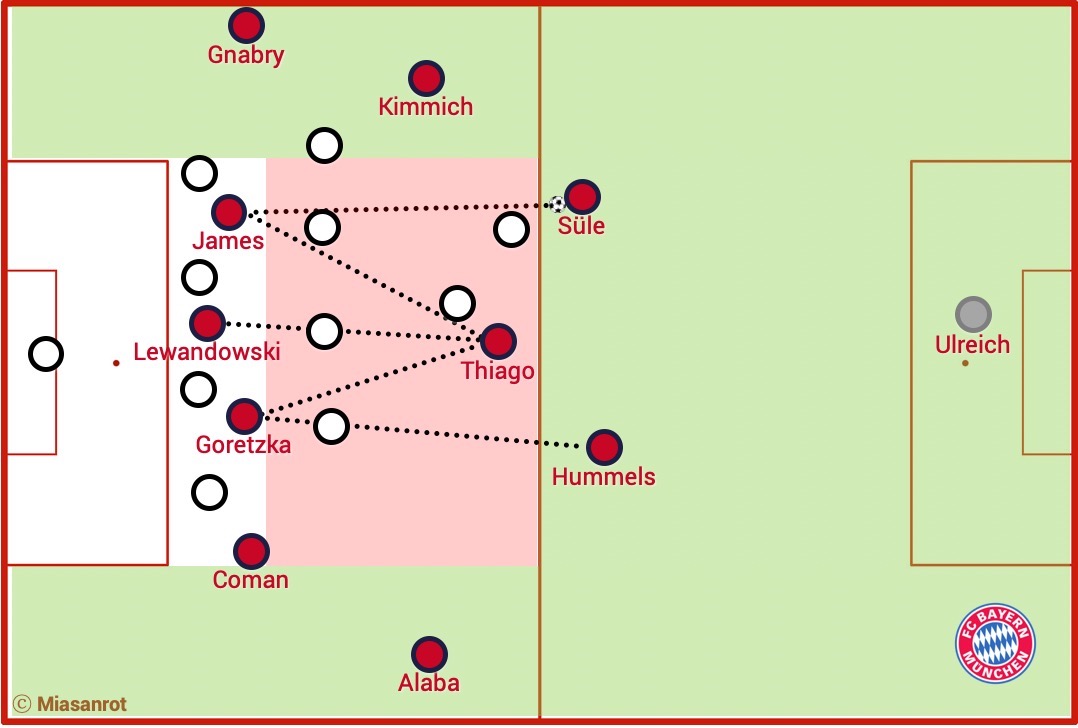
One possibility would be for the outer defenders to move in even harder, thus supporting Thiago’s protection or helping the offensive players in their counter-pressing. Also in possession of the ball there would be more options for the first pass, which would include shorter distances, which would minimize the risk without taking the punch in front. Another way would be to use a W-shaped staggering at the front, where James and Goretzka come a bit more from the depth. Manchester City, for example, uses both variants almost to perfection.
But for that to happen, the problem would have to be recognized first. In fact, public perception is directed towards individual mistakes and weak defensive behaviour by statements made by those responsible. However, this does not mean positioning with a ball, although this would be the starting point.
Where is the defensive concept?
The problems are similar against teams, who like Dortmund or Leverkusen can be rated more highly and who are also more confident about themselves. Although the five-player attack is less common, the center remains understaffed because either the triangle becomes a square and the number 10 stays in the same line with Lewandowski, or because the two offensive midfielders stick to the wings too much – sometimes even on the same wing, as against Hertha BSC. In addition, sometimes up to four players stand on a vertical line, which takes away the diagonality from their own game, which would be so important to break up compact teams.
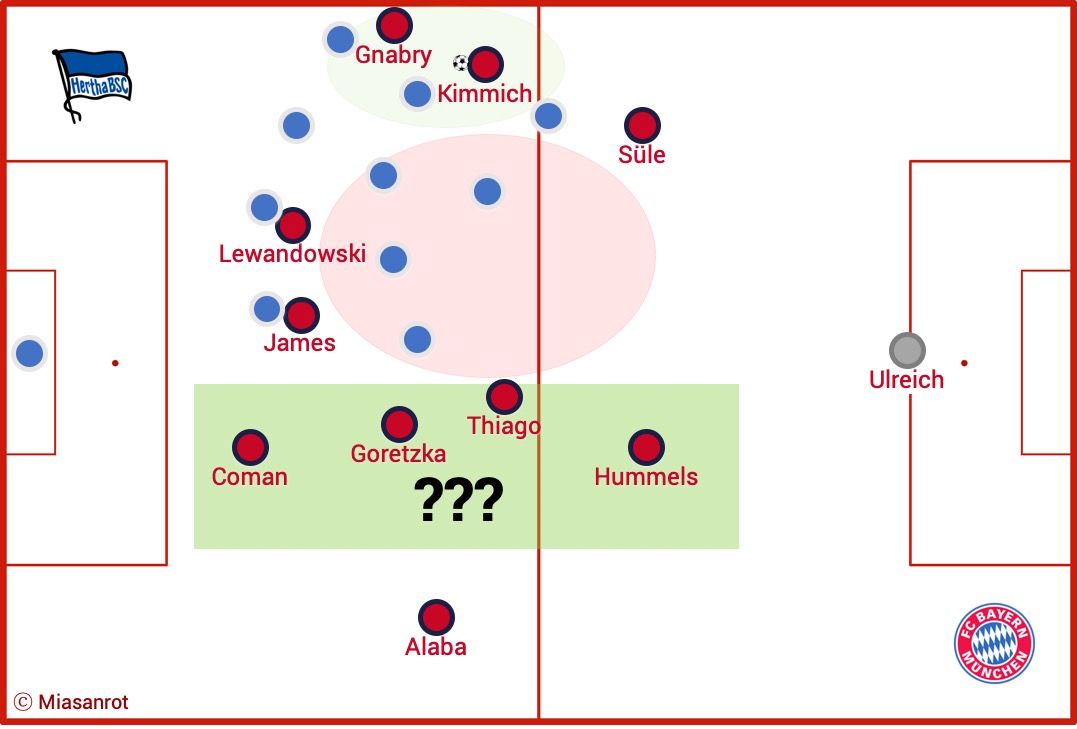
Whether against high pressure teams or against low pressure teams: The bad positioning in ball possession leads to more turnovers and consequently to completely crazy mechanisms in the following seconds. Almost all players fall into an emergency mode, in which everyone wants to defend the ongoing misery somehow.
But there is no principle, no specification and no idea behind it. Everyone tries it according to his own head. Here Alaba moves out and opens the room for Kotucu. Süle and Hummels don’t coordinate who orients themselves on whom to play offside now and there Kimmich runs half-heartedly from front to back, because he has lost hope anyway that someone will secure his space when he goes forward. And even in phases when Bayern have arrived in a defensive order, they toddle from one emergency situation to the next. Perhaps also because they are used to act. Not to react. It is not every single individual mistake that represents the problem. It is the tactical approach (or lack of it) that provokes and amplifies these mistakes.
The season as a reflection of the transition behaviour
And last but not least Niko Kovač and Hasan Salihamidžić are standing in front of the cameras and tell us something about how you could have pulled the tactical foul. Or that the individual mistakes were to blame. Or that one must finally get constancy into the performances. Or that the many goals against you only have to be turned off, because somehow a goal always falls in front.
But nobody says that it really starts with the ball and that’s where the root of all the problems lies. Not Kovač. Not Salihamidžić. Not the players. Not the Easter bunny. And as long as there is no understanding that FC Bayern is necessarily a team that controls all other phases of the game in possession of the ball, there will be no positive development. Not even through the lines for positional play on the training ground, which Kovač uses exclusively for defensive training. Probably without considering one’ s own possession phase.
And so it remains a season that reflects the behaviour of Bayern after turnovers. One scrambles from emergency situation to emergency situation and tries to save one’s ass somehow from game to game – under the disguise of a season in transition. Whether that will be possible against Liverpool again is highly questionable. It doesn’t matter at all. Great games always write their own history and FC Bayern always has the quality to win them somehow. But “somehow” is not the ambition. And the probability of success would be higher if a clear idea of how FC Bayern would like to play football could be seen. Because then it would be much easier to justify negative results.
On the last page we analyse Liverpool FC. Are there weak points?
When the duel between Liverpool and Bayern was drawn, many were sure that the Munich team would fall apart. This was due to the fact that the English ran away in the league and Jürgen Klopp seemed to have finally arrived in his fourth season. At last, however, there was a small dry spell.
Is that the straw that FC Bayern can reach for? Is the team that Guardiola crowned “the best team in the world” in January beatable? In any case, the analysis will reveal more strengths than weaknesses. But they do exist. There are points where Liverpool is vulnerable. The question will be: Can Bayern use these points to their advantage?
In recent years, the weaknesses at Liverpool have been quite clear and obvious. Especially when Klopp’s team was the clear favourite. The game structure was too sluggish, the fast attackers didn’t get their pace on the pitch, long balls over the attack sprinting quickly became dangerous and in defense you were susceptible to pressure as well as too large spaces between the lines.
Liverpool were always able to take points from the league favourites, but lost too much in the long distance championship race to seriously threaten City. Perhaps it was also the squad that was not comparable with other top teams in terms of depth.
Klopps underdog image works
Klopp knows how to stage his teams. Even at Liverpool, where 246.3 million euros were spent on four new players this season alone, he somehow manages to position himself as an outsider again and again. And fans as well as large parts of the media buy that from him.
He is an absolute media professional and knows how to communicate what in order to take pressure off his team. This season in particular, it gives the impression that Liverpool is playing a bit more liberated and self-confident at the same time.
Even before the Champions League round of the last sixteen, Klopp knew how to skilfully push away the role of favourite. Although it’s his team that still dominates the table, and although his Liverpool are last year’s finalists in the competition, he cleverly pushes the pressure away: “People act like we’re the favourites. I think that’s extremely funny. I see two strong teams meeting where I don’t know who’s going to make it”.
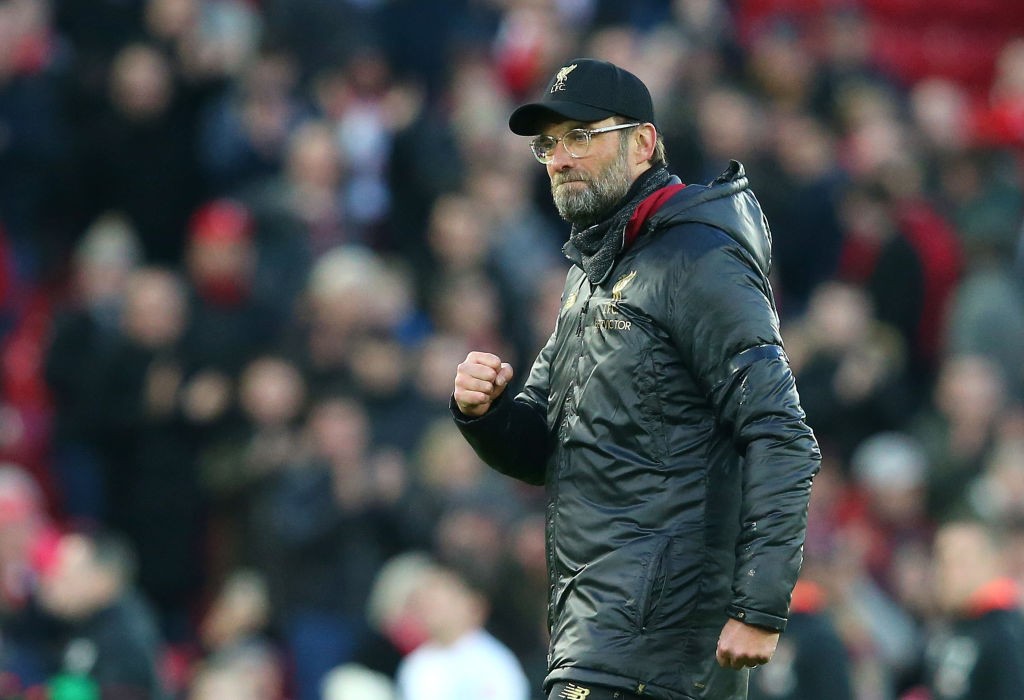
(Photo: Alex Livesey/Getty Images)
The development of Liverpool FC
However, many experts agree that Liverpool is at least slightly favoured. This is because Klopp was able to solve most of the problems from previous years. The quality of the squad has improved somewhat and it is now deeper, and the Reds are no longer conceding so many goals. Above all, however, it was the tactical adjustments that provided the urgently needed balance.
Fabinho was a kind of breaker for the midfield for 45 million Euros. He is tall, physically strong, but – and this is often underestimated – also technically gifted. The Brazilian is not invisible in the build-up game, but sprinkles in clever passes. Klopp was thus able to tackle two problems: On the one hand the team is more stable with him on long balls and on the other hand Fabinho can be an invigorating element in the game.
Virgil van Dijk, who Hummels sees as the best central defender at the moment, also made his mark. Rightly so. The Dutchman took the duel strength of the remaining defence and the build-up game to a new level. And then there’s goalkeeper Alisson, who is also a clear upgrade to Loris Karius in goalkeeping – with the ball at his feet and on the line.
Variability
But it’s not just the transfers that have made Liverpool a top team. It is also the flexibility of the coach, who this season wants to emancipate himself from his past by achieving something great. Klopp loves to adapt at least one tactical detail after 6-7 games.
He changed his formation several times this season. In addition to the most common arrangements – 4-3-3 and 4-2-3-1 – Liverpool also played in 4-4-2 or 4-1-4-1: These are all formations that are extremely similar but can make differences in detail.
This is especially true for pressing. Klopp’s “full throttle football” is better balanced this season. Liverpool presses smarter, more efficiently and ultimately simply better. After the 3-2 victory over PSG in the Champions League group phase, Klopp said that counter-pressing was important, but only if the opponent would allow it.
Even better pressing
With this he indirectly addressed a further improvement of his team. Liverpool understands well how to vary the press. If the pressure is still extreme for the opponent in one moment, Liverpool lets him come a little more in the next. But always with a clear idea and a goal in mind.
Against Paris Klopp often left small rooms in the centre for Neymar because he knew that PSG would play on them. However, the team cleverly positioned themselves around him to let the pressing trap snap shut. Neymar only managed two shots, had a passing accuracy of 75.6% and lost possession four times. However, he played four key passes and collected an assistant. But such a player can never be eliminated completely.
The point is that Liverpool does not have the one pressing trap, but adapts very intelligently to the opponent. Against Bayern, Liverpool will probably try to defend Lewandowski’s evasive movements and provoke long flat passes in the supposed space between the lines to then drive fast counterattacks. As already analyzed, this is the Achilles heel of the Munich team.
Weaknesses of Liverpool FC
But nobody is perfect and so Liverpool also has weaknesses that have been discovered even in the current excellent season – by teams of all classes. The team that is perhaps most similar to Bayern in England is probably still Manchester City. Yes, yes. On a different level, of course. Guardiola’s positional play is at least, well, many floors above the Munich floor.
Nevertheless, Kovač can learn a lot from the previous encounters between these two teams. City managed to provoke the Liverpool’s pressing and then attack through midfield with quick combinations.
Liverpool’s full-backs sometimes push very high. Unlike Bayern, however, the Reds secure the spaces behind them better. And yet City managed several times to lure the full-backs out and then with triangles over the half-spaces to get to the front, where then the fast wing players had more space.
Solution approaches for the Bayern
A model for Bayern could be to pull Liverpool’s pressing on its own left side and then have Hummels open on Thiago, who in turn forms triangles with Alaba and Coman. In a somewhat farther and higher zone James could support. Individually, these players are superior to almost any opponent. However, they must function as a team and position themselves wisely.
It also needs follow-up actions. Coman, James and Lewandowski can be another triangle to create danger. If the pitch is too narrow on the side because Liverpool is good on the ball, Thiago could move up to Kimmich and Gnabry. Bayern need speed, courage and above all a short pass. The long and dangerous passes of recent weeks and months could break their necks if they happen too often or if Liverpool waits for them.
And even then, of course, it is easier to write the text than to put it into reality. However, it’s a fact that Liverpool got into trouble when the spaces behind the full-backs were exploited.
Success via dead ball situations?
Liverpool also revealed a weakness in standards. Five of the 15 league goals the Reds conceded came after a standard. Bayern are currently not known for their extremely dangerous standards. Approximately 27% of all Bayern shots come after standard situations in the Bundesliga. After all six goals after corners (and two after penalties) were recorded. At least it would not be uncommon for standards to help out in big games.
One last weak point, if you can call it that at Liverpool, is the loss of Virgil van Dijk. This makes the Reds even more vulnerable to standards and also makes the construction game less stable. Without the Dutch, Bayern will have to make sure they set their own pressing traps and occasionally attack Liverpool high. Their own performance in Hoffenheim could serve as a role model. Especially in midfield, the English are not as structurally and technically outstanding as other top clubs. But that doesn’t mean that Bayern should play attacking pressing all the time. It’s just as necessary to defend yourself deeply and beat Liverpool with your own weapons in counter situations.
It’s a mixture of pressure, good staggering against the ball and one’s own short pass game that could bring a good result against Klopp’s Liverpool. This is also proven by the PPDA statistics (passes per defensive action) of understat.com. It measures how many passes the opponent can play until a defensive action takes place.
Getting into the game
At the end of September, Liverpool allowed an average of just over 15 passes against Chelsea. The result: 1:1. Against Manchester City it was also just over 15 in October. The game ended with 0:0. Liverpool also did not come into the duels so well in the 1:1 against Arsenal (24.6 PPDA), the 2:1 defeat against Manchester City (25.79 PPDA) and the only narrow 1:0 victory against Huddersfield, who could have tipped in any direction (18.94 PPDA). This was not the case with sovereign wins such as the 2-0 win over Fulham (4.57 PPDA) or the 3-1 win over Manchester United (8.59 PPDA).
The connection can also be random. There are counter-examples where Liverpool allowed many passes, but still won, or allowed few passes, and finally lost. But also the subjective impression as well as the logical common sense say: if teams somehow manage to bypass Klopp’s (counter-)pressing at least partially, Liverpool gets problems.
And that was at least not uncommon in the last weeks and months. Liverpool is an outstanding team and has been superior to Bayern in many areas so far. But perhaps Bayern will manage to use the few weak points to their advantage. Even the initial phase of the first leg could be decisive here. Klopp likes to let his team go a high pace there.
Where does FC Bayern stand? Or where not?
In the past, this has sometimes resulted in great victories, such as the success over Manchester City last season. But there were also heavy defeats in which his team lost a lot of strength after about an hour – Bayern fans will remember Wembley 2013.
The question will be whether Kovač will be focusing on their own strength with Goretzka, James and Thiago on the road, or whether Javi Martínez will find his way into the starting eleven as a hoover in front of the defence. Then he would probably play for Goretzka or James. A change of formation is out of the question, although a 4-3-1-2 with Martínez, Goretzka, James and Thiago could make sense. A back-three also be exciting, because it would be easier to secure Kimmich’s and Alabas’s attacks.
At Liverpool, on the other hand, it seemed for a long time that Klopp had found the balance this season that Kovač is still looking for. But who knows? Maybe Bayern will be able to survive the heated initial phase and take advantage of it in the final stretch. Either way, they will have to make wise decisions under pressure. Already the first leg will reveal clearly where the team of Niko Kovač stands. Or where it does not stand.



